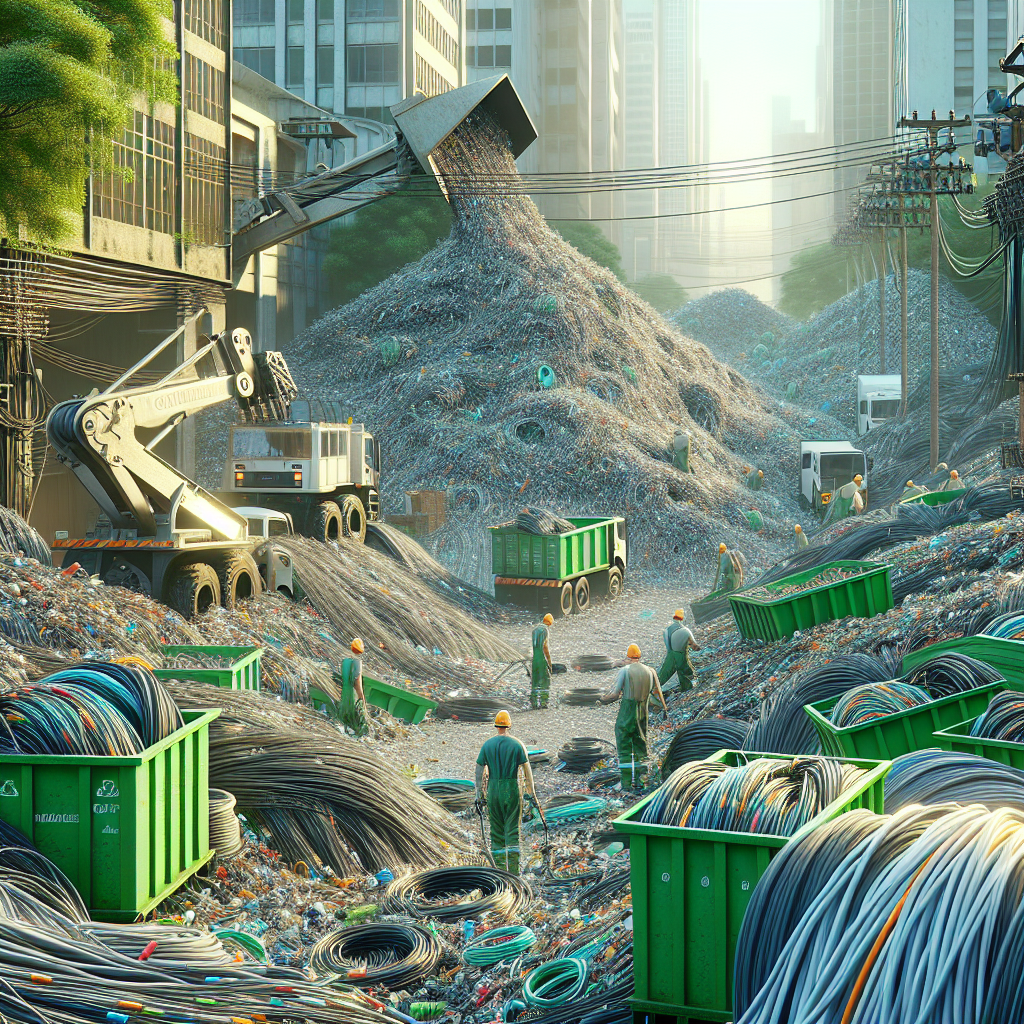Blog Ecobraz Eigre

Coaxial Cable Recycling in São Paulo
Introduction to Coaxial Cable Recycling in São Paulo
Coaxial cable recycling is an essential activity for efficient environmental management, especially in large urban centers like São Paulo. This process contributes to reducing environmental impact by promoting material reuse and preventing soil and water contamination.
Composition of Coaxial Cables and Their Importance in Recycling
Coaxial cables are mainly composed of copper or aluminum conductors, dielectric insulation, metallic shielding, and external plastic coating. The copper present in these cables is highly valued in the recycling chain due to its conductivity and reuse in various industrial sectors.
Legal and Regulatory Aspects Regarding Coaxial Cable Recycling
The proper management of electronic waste, including coaxial cables, is regulated by the National Solid Waste Policy (Law No. 12,305/2010). This legislation establishes guidelines for integrated management and environmentally appropriate handling of waste, promoting shared responsibility among generators, distributors, and recyclers.
Additionally, CETESB (Environmental Company of the State of São Paulo) regulates and supervises recycling and proper disposal operations, as provided on cetesb.sp.gov.br.
Technical Processes in Coaxial Cable Recycling
The process begins with the sorting of collected coaxial cables, followed by the manual or mechanical removal of the outer PVC layer. The metallic shielding is stripped to allow extraction of the internal conductors. Specific techniques for copper recovery guarantee high purity of the recycled material, complying with current environmental standards.
Collection and Logistics for Recycling in São Paulo
For proper disposal of coaxial cables, especially in corporate environments, it is recommended to use specialized electronic waste collection systems. These services ensure that waste is appropriately directed, preventing pollution and promoting material reuse.
Security in the Destruction of Media and Sensitive Components
During recycling, components such as hard drives or other storage media present in assemblies including coaxial cables must undergo sanitization processes to ensure secure data destruction, as mandated by legislation such as the LGPD (General Data Protection Law), utilizing specialized techniques available in secure HD disposal.
Environmental and Economic Benefits
Recycling coaxial cables helps reduce natural resource extraction, soil and water pollution, and generates economic value through the recovery of high-quality metallic materials. This aligns with the goals of the National Solid Waste Policy and targets set by the European Union and other international organizations for sustainability.
Challenges and Future Perspectives
Despite the advantages, coaxial cable recycling faces challenges such as the technical complexity of the process, the need for adequate infrastructure, and raising awareness among generators about the importance of proper disposal. Integration among government agencies, industry sectors, and collection services is essential to expand the efficiency and scope of these programs.
Initiatives like the National Information System on Solid Waste Management (SINIR) provide a basis for public policies and environmental performance monitoring, available at sinir.gov.br.

Deixe um comentário
O seu endereço de e-mail não será publicado. Campos obrigatórios são marcados com *